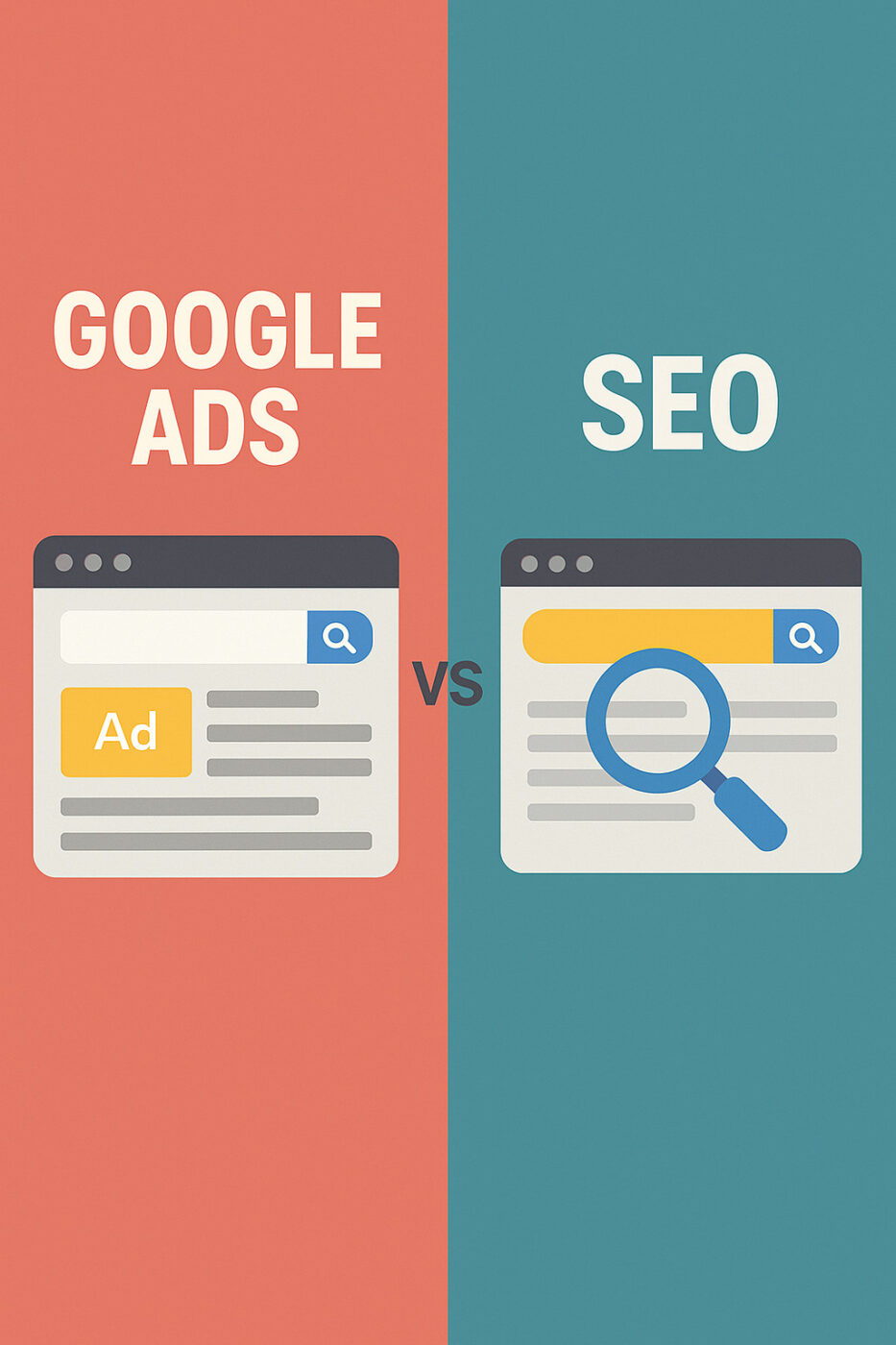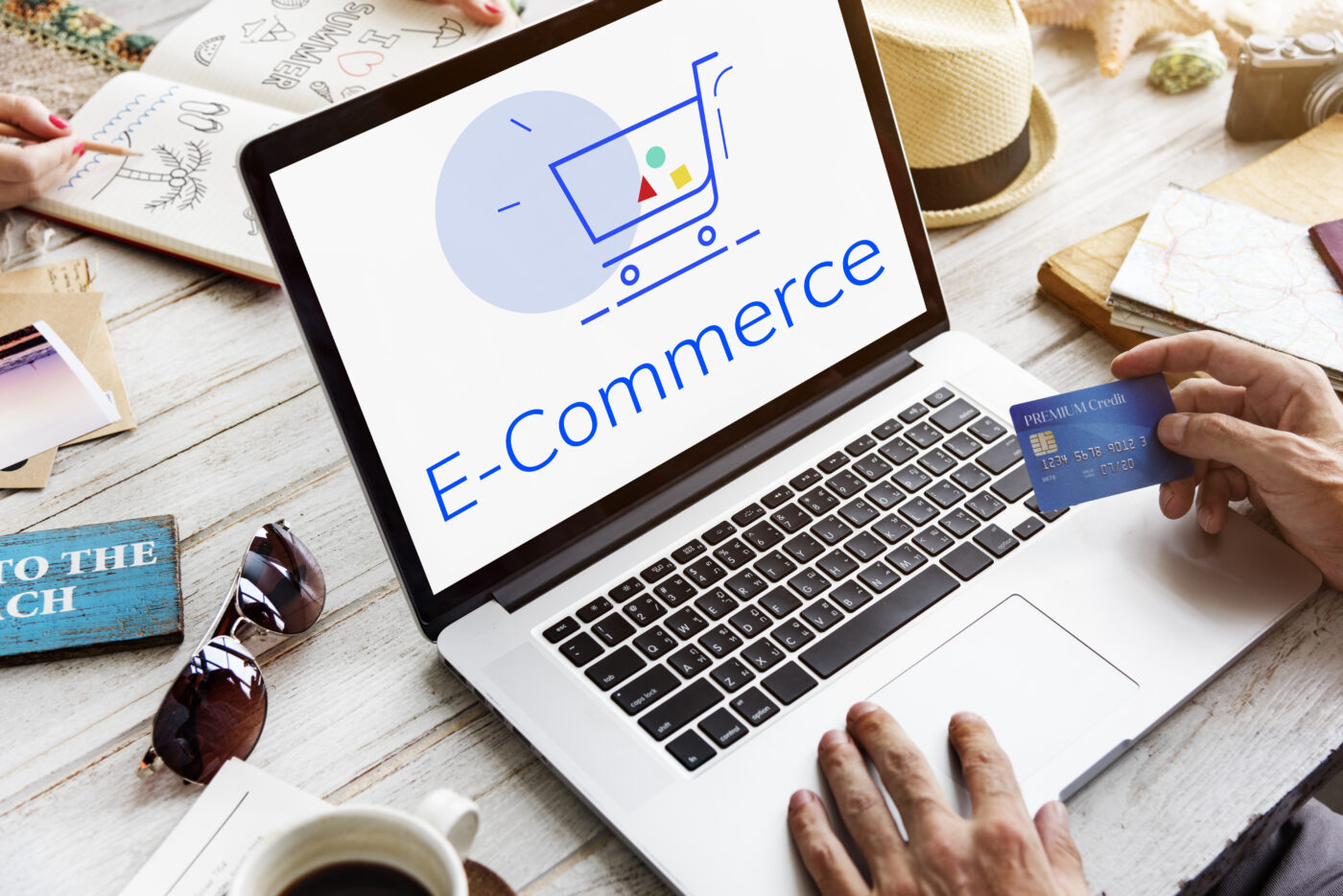Google Ads vs SEO: Index
-
Introduction
-
What Google Ads Offers
-
What SEO Delivers
-
Head-to-Head Comparison
-
Use Cases: Which Should You Choose?
-
Combining Both for Maximum Impact
-
Action Plan for Small Businesses
-
Conclusion
1. Introduction
Small businesses often ask: which is better—Google Ads or SEO? The ideal answer depends on your goals, budget, and timeline. Let’s explore each option clearly so you can choose wisely.
2. What Google Ads Offers
-
Immediate visibility: Your ads can appear at the very top of search results as soon as your campaign launches—ideal for urgent traffic and lead generation.
-
Highly targetable: Bid-based model lets you control keywords, locations, devices, and demographics, plus retargeting capabilities .
-
Scalable & measurable: Quick ROI testing; budgets can be adjusted instantly. With smart campaigns and Performance Max, scaling becomes easy.
-
Higher conversion likelihood: PPC visitors are around 35% more likely to convert compared to organic traffic.
Considerations:
-
You stop seeing traffic the moment you stop paying.
-
Costs vary by keyword competition and require ongoing budget.
-
Requires PPC expertise to avoid wasted spend and optimize conversions.
3. What SEO Delivers
-
Long-term organic traffic: Once established, your rankings continue working long after initial investment.
-
Boosts trust & authority: ~70% of users click organic results over ads, increasing brand credibility.
-
Cost-efficiency: While slower, SEO delivers free clicks with ongoing ROI—ideal for budget-conscious businesses.
-
Valuable data insights: Organic traffic patterns reveal long-term user behavior and content performance.
Considerations:
-
Takes time—typically 6–12 months—to show significant results.
-
Requires consistent investment in content, optimization, and link-building.
4. Head-to‑Head Comparison
| Feature | Google Ads (PPC) | SEO (Organic) |
|---|---|---|
| Speed of results | Instantly visible | Takes 6–12 months |
| Cost structure | Paid clicks (ongoing) | Initial setup + content investment |
| Scalability | Highly scalable | Scales slowly via content creation |
| Control | Granular targeting & creatives | Less control on positioning |
| Trust factor | Ads marked and sometimes skipped | High trust via organic visibility |
| Sustainability | Stops when budget stops | Persisting rankings and traffic |
| ROI potential | Immediate, higher cost | Lower long-term cost, steady returns |
5. Use Cases: Which Should You Choose?
-
Google Ads best suited for:
-
Launching a new product or seasonal offer
-
Generating leads quickly
-
Testing keyword-concept fits before SEO investment
-
-
SEO best suited for:
-
Building long-term brand authority
-
Tight marketing budgets or limited ad spend
-
Establishing sustainable, evergreen traffic streams
-
-
Best approach: Combine both—use Google Ads for short-term needs and SEO for lasting growth.
6. Combining Both for Maximum Impact
-
Use Google Ads for keyword testing before optimizing content.
-
Employ PPC to fill gaps while SEO takes time to rank.
-
Reinforce brand awareness—seeing both ads and organic results boosts trust.
-
Data synergy: Use PPC conversion data to refine SEO targeting.
7. Action Plan for Small Businesses
-
Define your priority: immediate leads or long-term growth?
-
Allocate budget: split between campaigns and SEO investment.
-
Launch a small PPC campaign to test keywords and landing pages.
-
Start SEO: refinance your website, create optimized content, claim Google My Business.
-
Monitor results: track conversions (for PPC) and rankings/traffic (for SEO).
-
Adjust as needed: scale what works, pivot what doesn’t.
8. Conclusion
Neither Google Ads nor SEO is inherently “better”—it depends on your business needs. Google Ads offers speed and precision; SEO delivers sustained, cost-effective growth. For most small businesses, the winning strategy is a balanced combination: use PPC for fast impact and SEO for long-term stability. Implement with clear goals, measure performance, and adapt to maximize growth.







